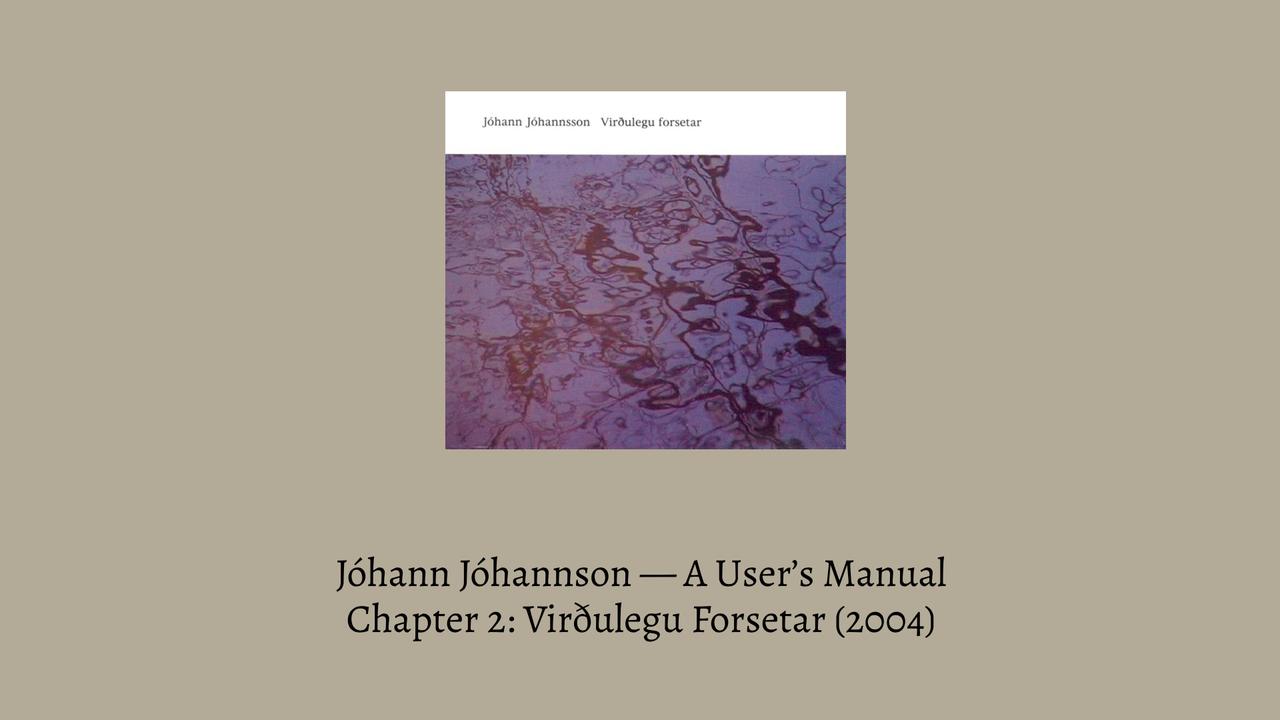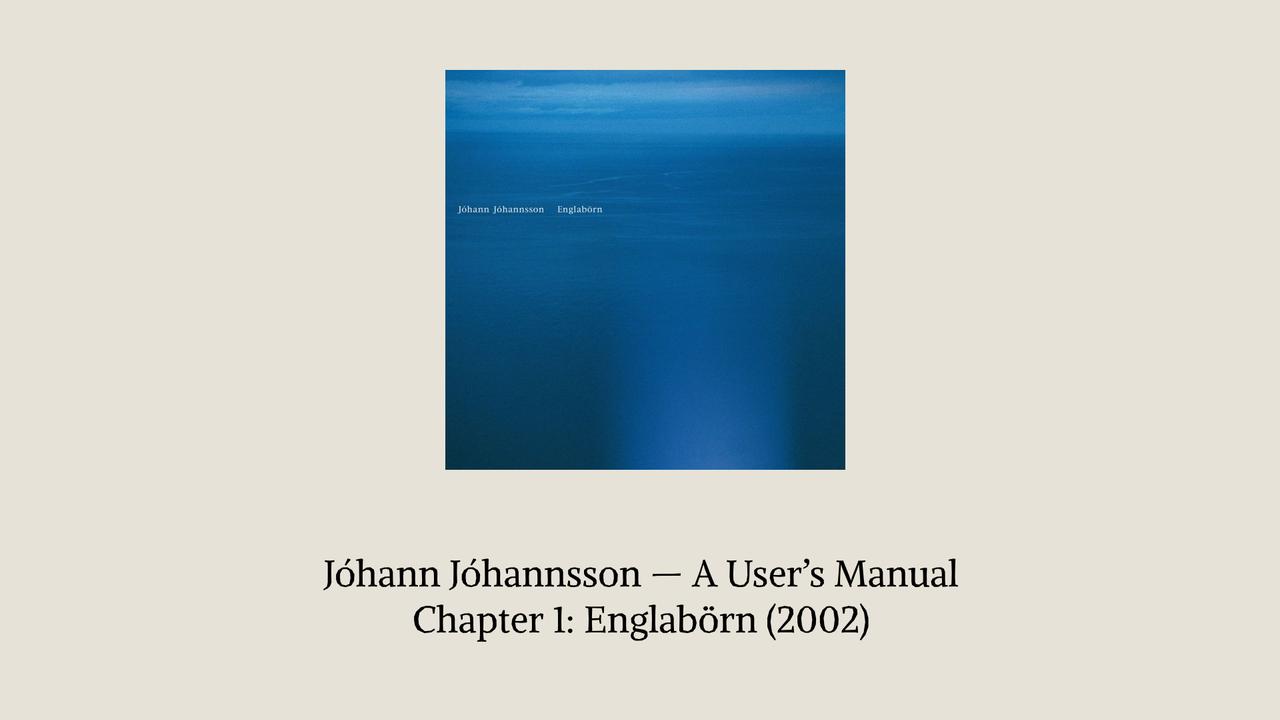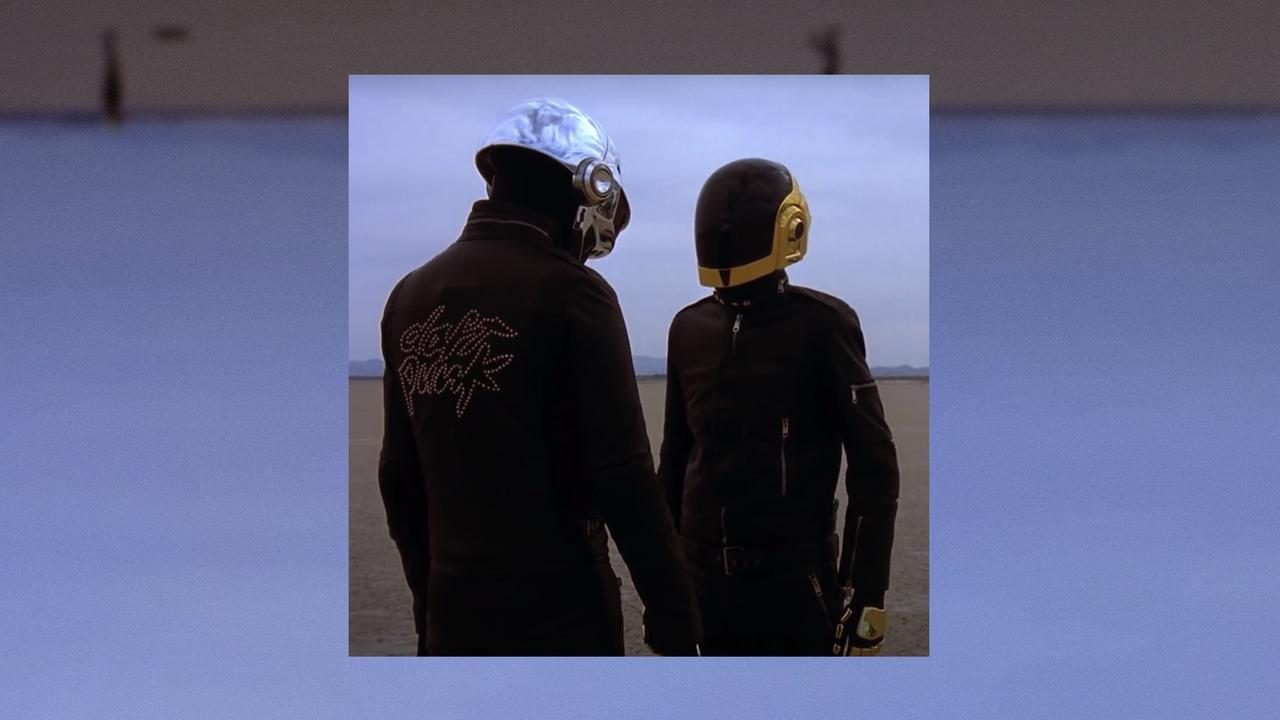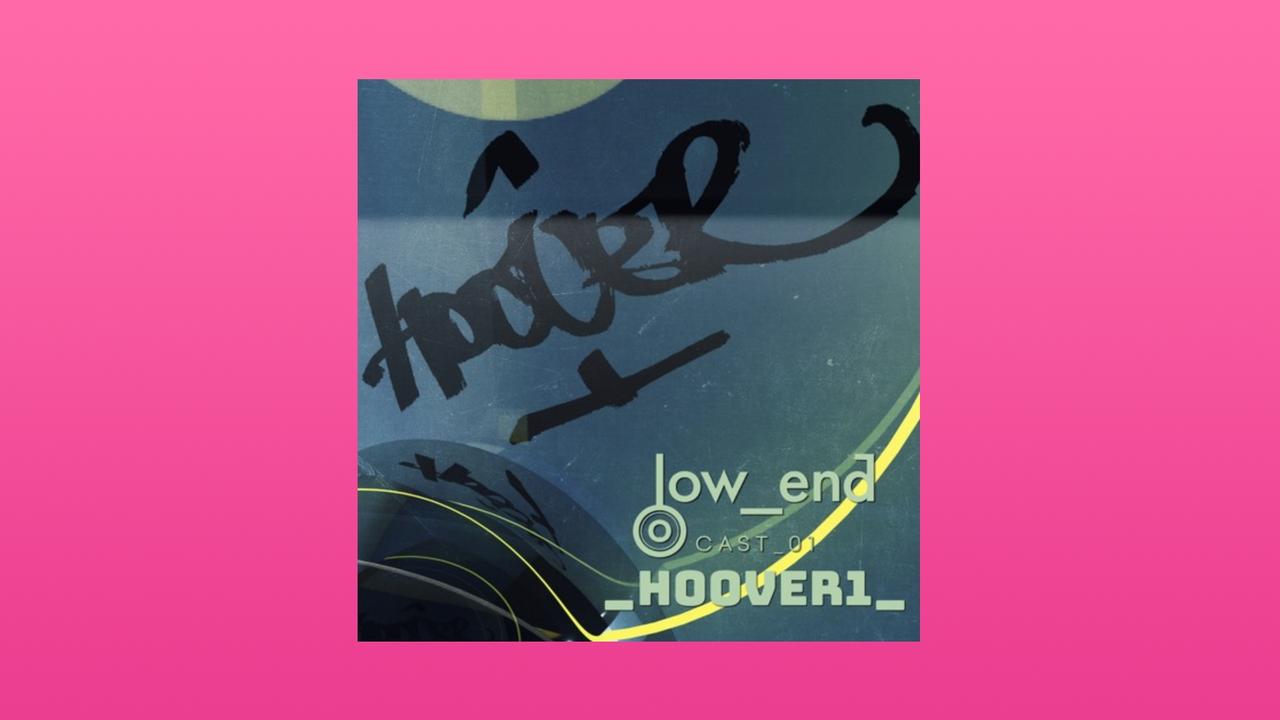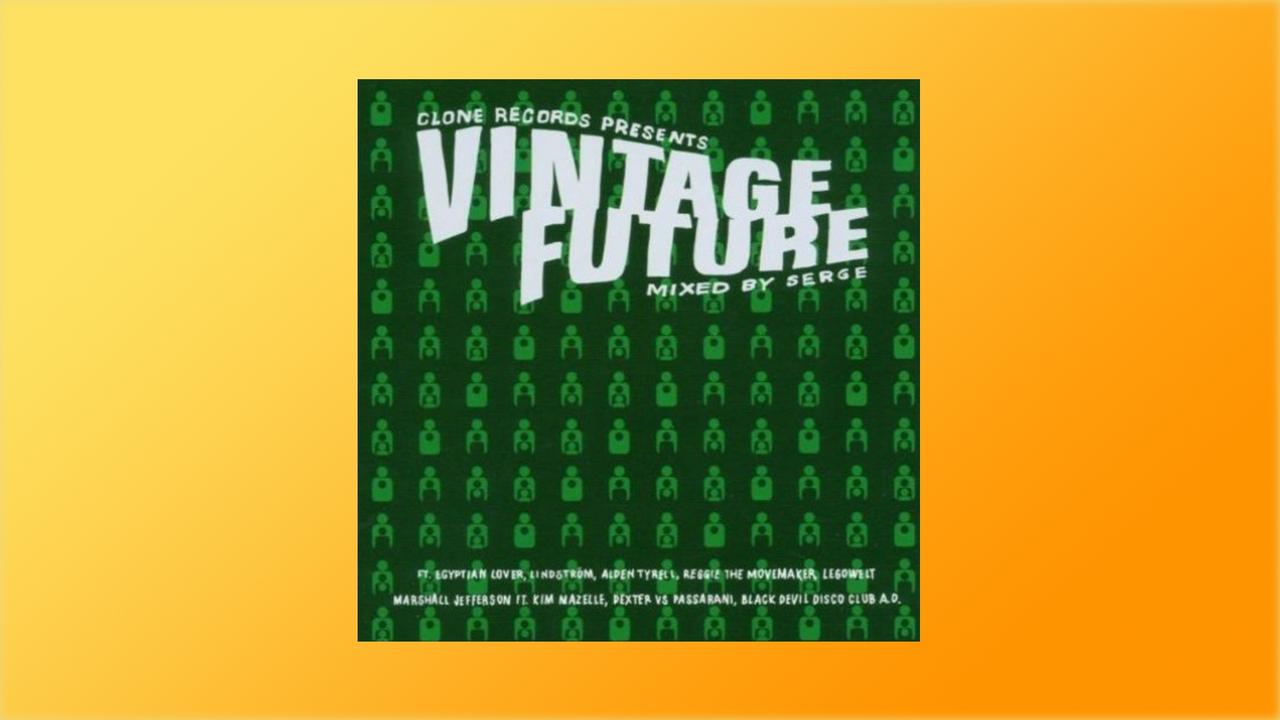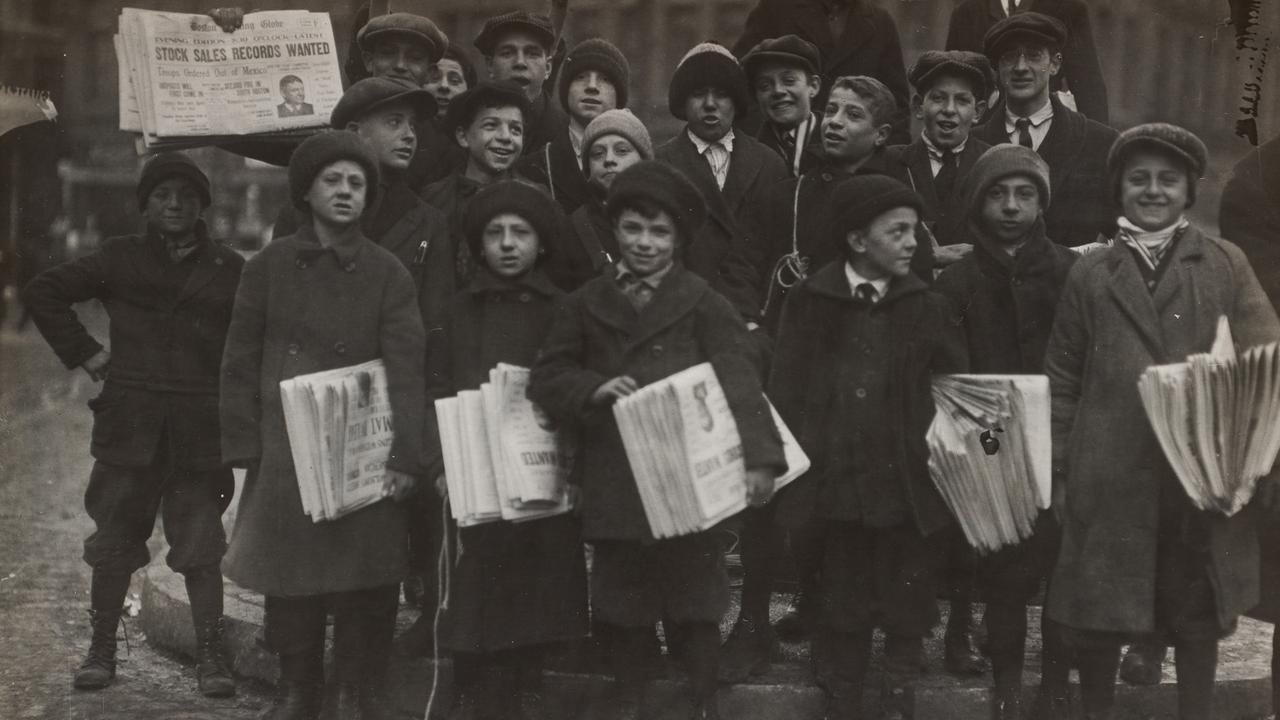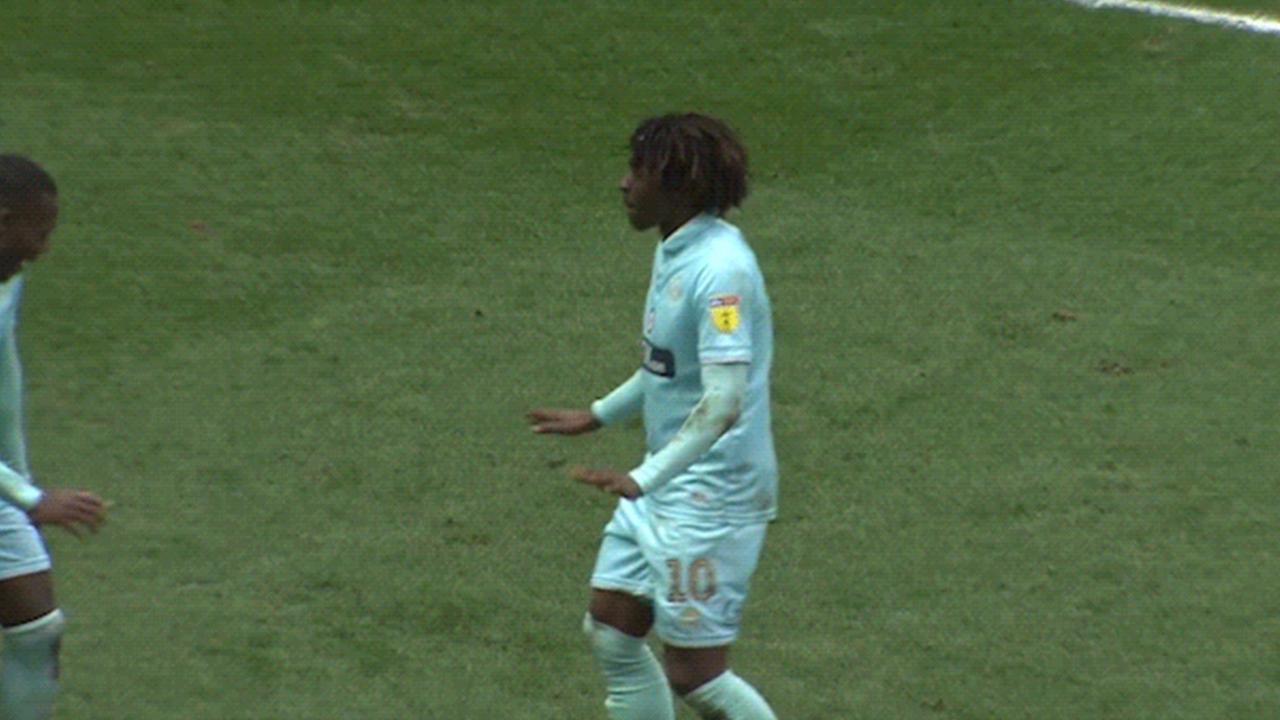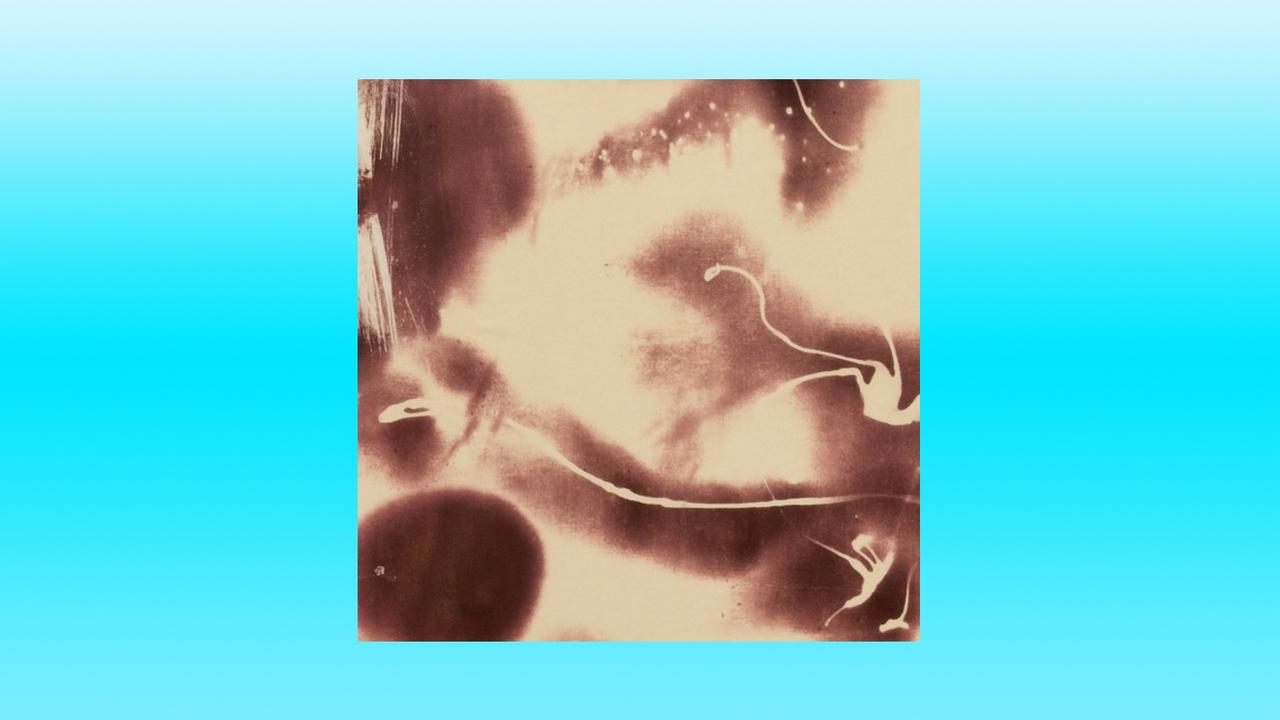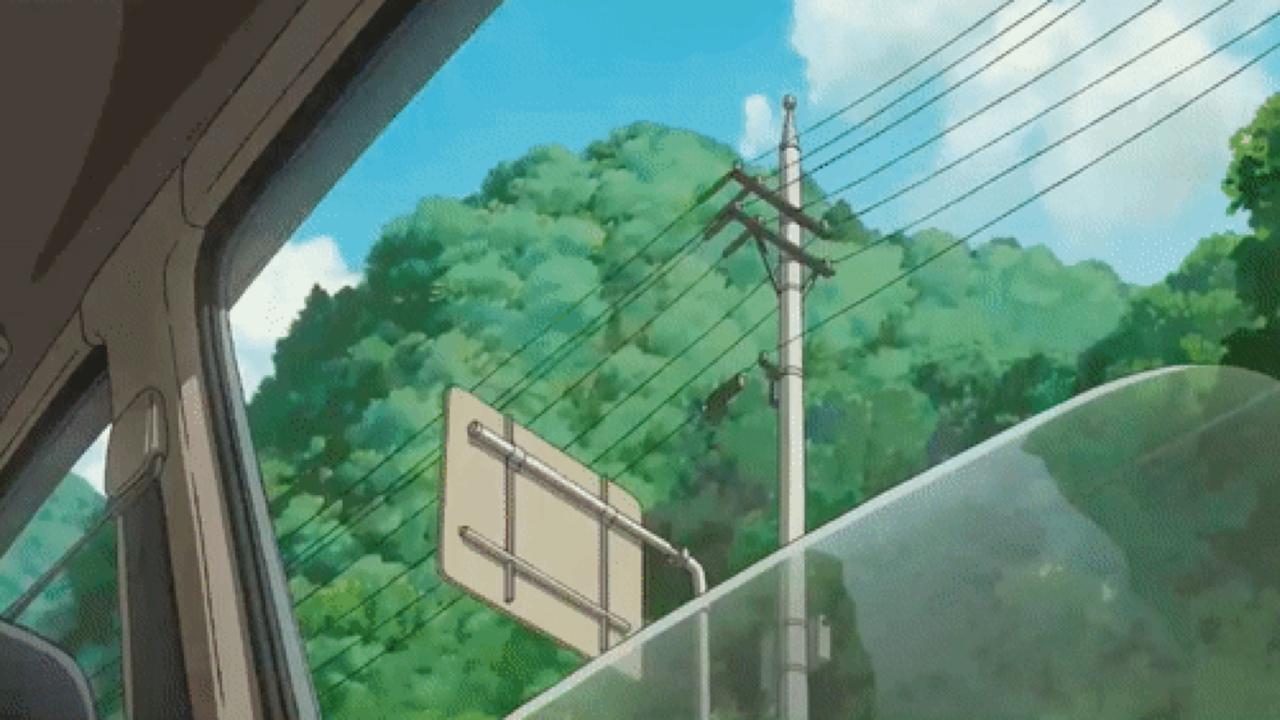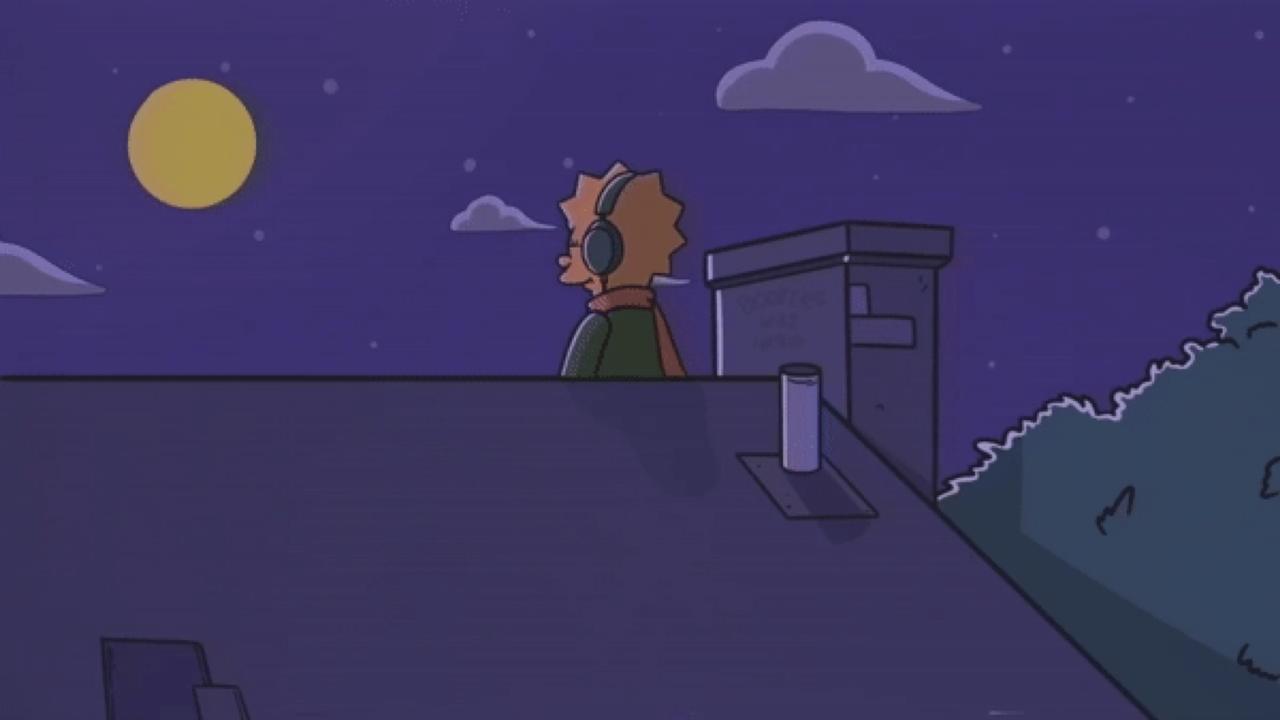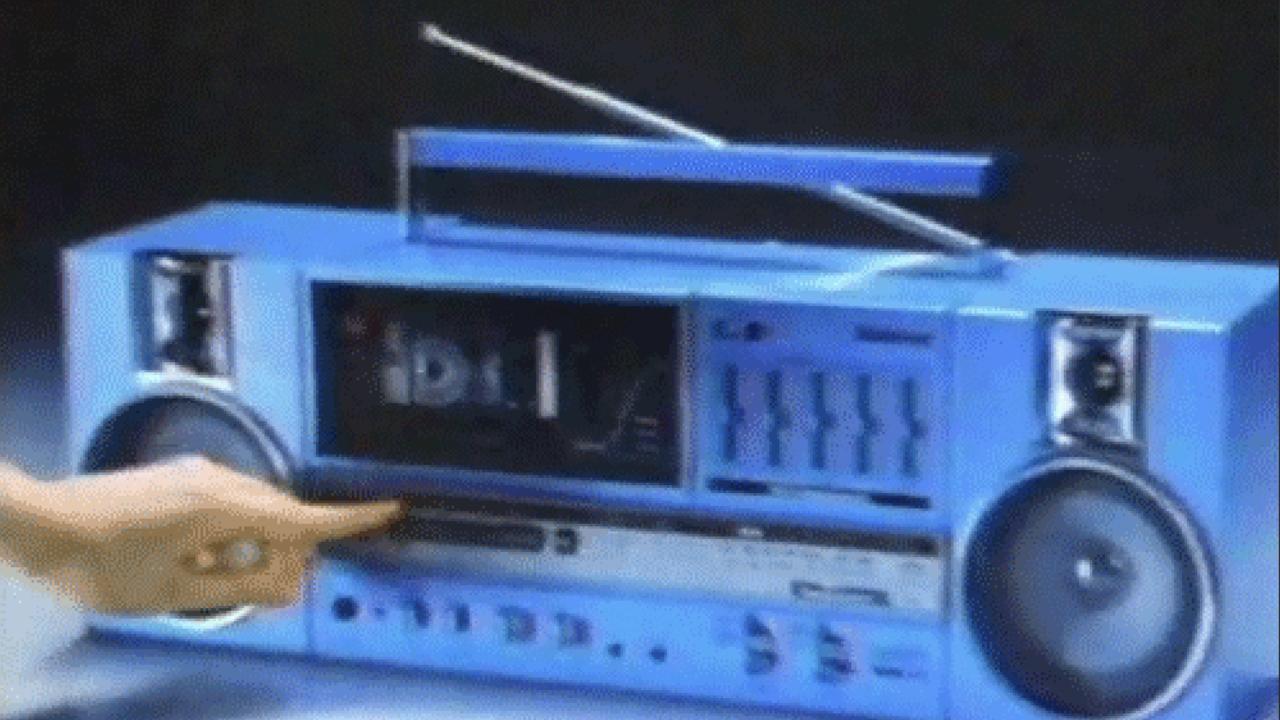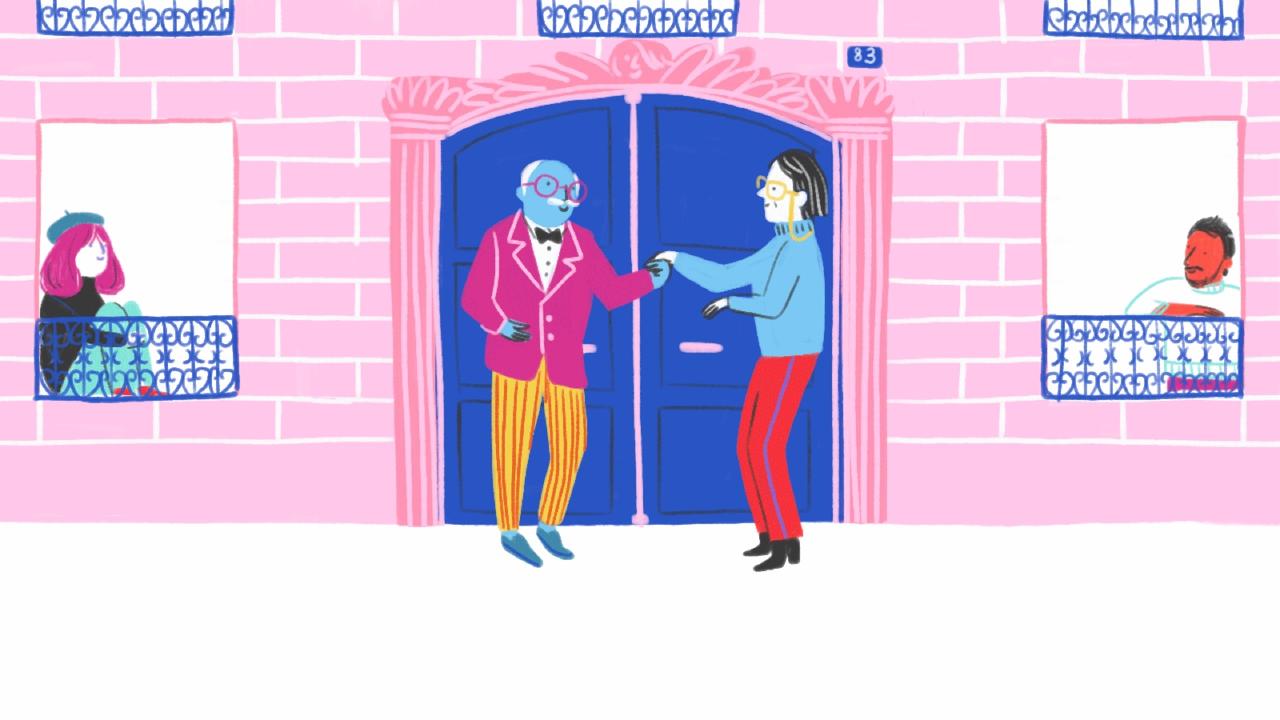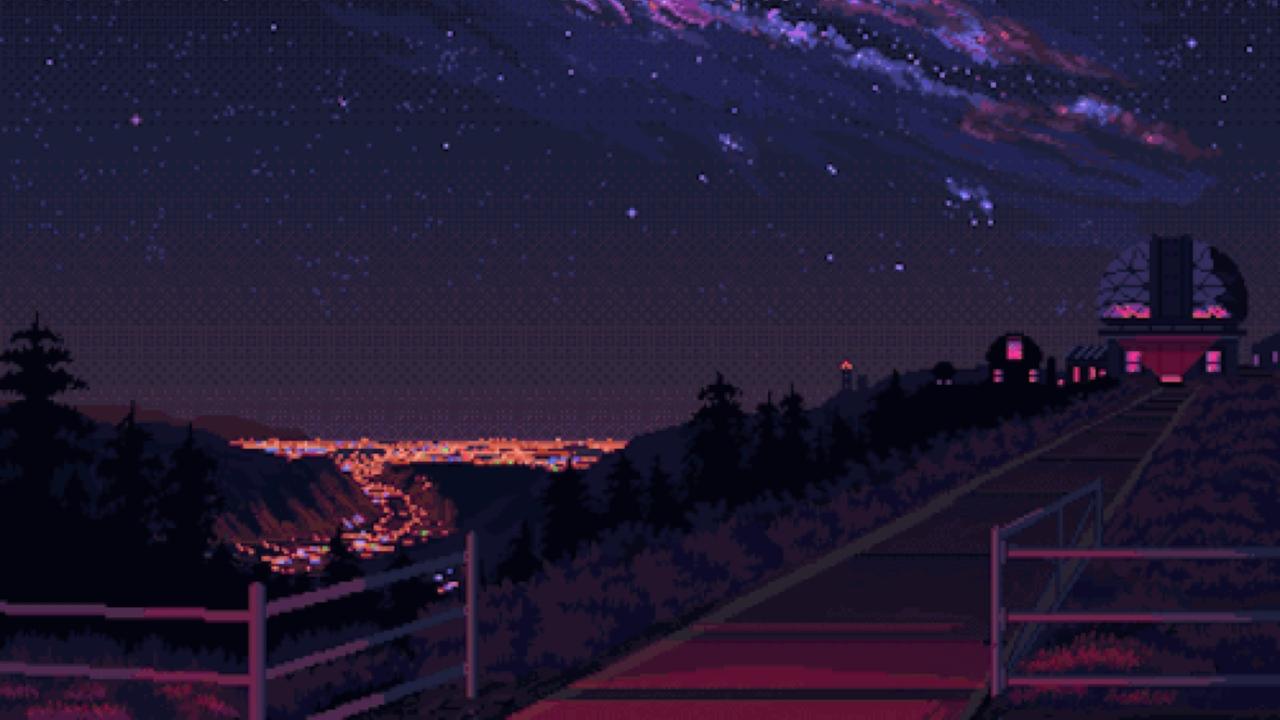Jóhann Jóhannsson – A User’s ManualChapter 2: Virðulegu Forsetar (2004) – English
9.3.2021 • Sounds – Conversation: Kristoffer Cornils, Thaddeus Herrmann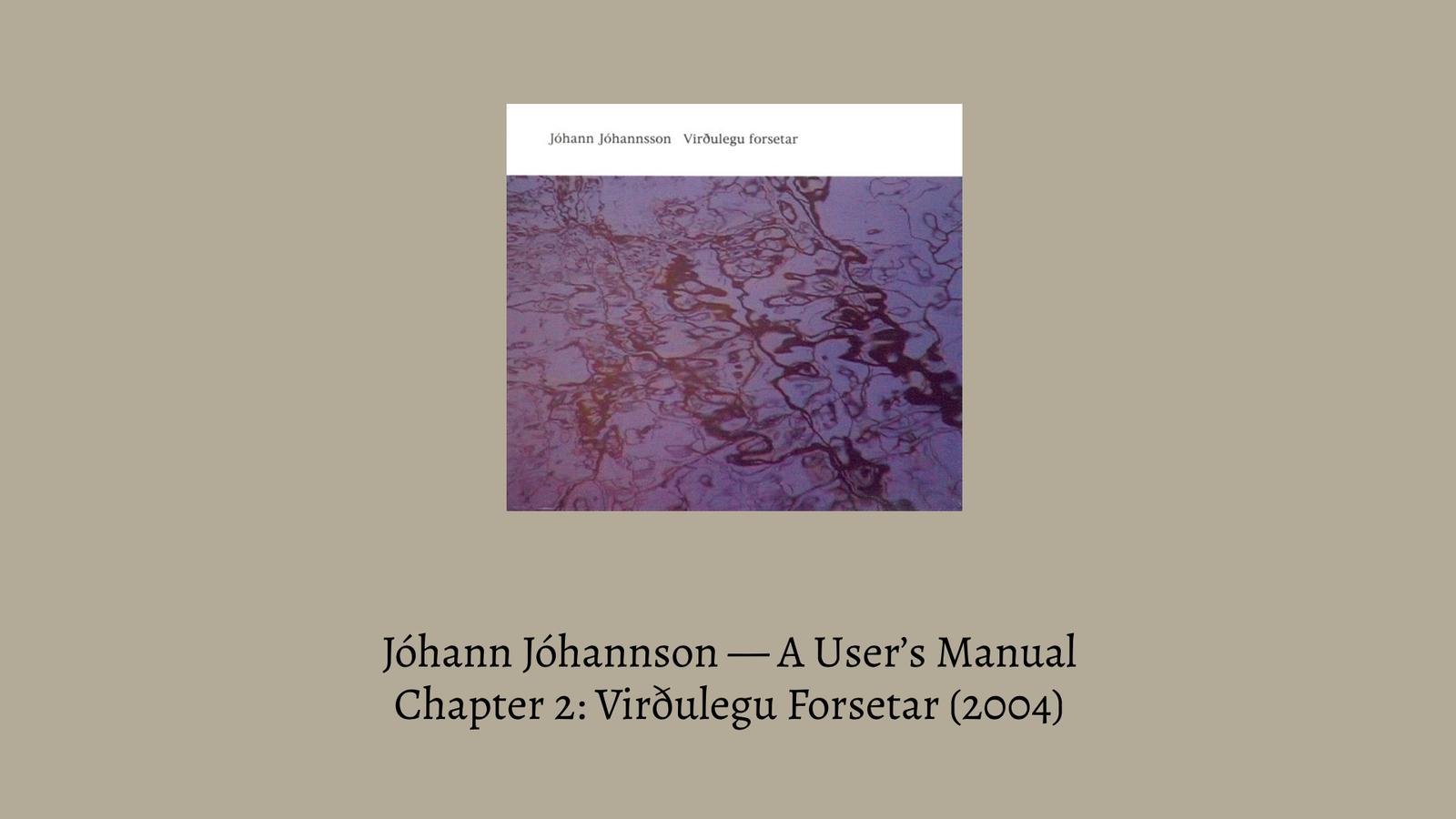
Jóhann Jóhannsson has released well over 20 albums in his career. And who really knows how many sound documents still lie in the drawer that could see the light of day posthumously. Once a month, Kristoffer Cornils and Thaddeus Herrmann review the composer's work - chronologically, album by album. In March, they both tackle "Virðulegu Forsetar" - the second solo release by Jóhannsson, who died far too early in 2018.
Deutsche Version? Hier klicken.
Is "Virðulegu Forsetar" Jóhann Jóhannsson's true debut album? Yes, but no, say Kristoffer Cornils and Thaddeus Herrmann, who are still at the very beginning of their two-year journey through the late composer's back catalogue and yet already know the path ahead of them like the backs of their hands. The story so far: after the Icelander had honed his craft in the context of a number of different local bands, the British label Touch re-released his first soundtrack work in 2002. "Englabörn" had been written for a theatrical play and was subtly reworked for the new release, but therefore also worked as an album-as-such.
It would be two more years before Jóhannsson returned with "Virðulegu Forsetar," also on Touch. The recording, released in October 2004, stands in stark contrast to the chiselled miniatures of "Englabörn": it stretches out and takes its time, reverberating in the room and everyone’s marrow. Herrmann and Cornils thoughtfully open the second chapter of the series Jóhann Jóhannsson – A User's Manual. What do they find? Dissolving boundaries, and much more.
Kristoffer: We are not sitting at our desks, we’re not in Berlin and this is not the year 2021. We’re sitting shoulder to shoulder in the nave of the most impressive Christian building – sorry, Gaudí – I have ever seen: the Hallgrímskirkja in Reykjavík. A place of worship like something out of a Mariusz Lewandowski painting.

Foto: Yves Alarie on Unsplash
It is evening. In front of us, but also behind us: the musicians. Brass instruments, glockenspiel and bells, piano, organ and electronics, have been set up on the two opposing sides of the space. When these 20 or so people will have stopped playing, it will be night – not a matter of course in these latitudes. We listen intently for roughly an hour. There is a constant droning. In the higher frequency range, it surges up and down. The earth does not shake, it rises. Or maybe it's just the helium-filled blue balloons that slowly sink to the ground over the course of the hour; faster and faster the louder the music gets. Gravity pulls them down and us along with them.
That's roughly what the premiere of "Virðulegu Forsetar" must have felt like in 2003. A year later, the composition was, like "Englabörn" before, released as an album on Touch, first both on CD as well as on audiophile DVD in a 5.1 surround mix that was meant to recreate the live experience with a recording from the same location. It was only later that it was reissued on vinyl and thus landed in my hands when I dug through the crates at Rumpsti Pumsti, which was still based in Berlin-Neukölln at the time. At the time, I loved "The Miners' Hymns," so I took the record with me without even having sampled it. At home, I let it take me with it. I ended up right in the nave of Hallgrímskirkja, sometime in 2003.
Eighteen years and one posthumous performance of the work later, I would now like to know from you, Thaddi: what feelings come to you when you hear this music? In our last session you spoke of the „epochal, dark and pastoral“ character of this album. What does that mean translated into the listening situation? Drawn curtains and dreams of Icelandic hillsides?
Thaddi: I neither have my curtains drawn nor am I dreaming of Iceland. On the contrary. For me, this music has an unbelievable radiance – and the brightness doesn't clash at all with the thoroughly dark mood. Which is not really dark either. Instead, it is rather sublime, glistening and majestic. Intrinsic and yet full of movement. All of that sums up the term pastoral for me. In comparison, "Englabörn" is a kind of finger exercise in chamber music, if you will. This record however is – musically speaking – about the big picture: with comparatively small means. Over the length of the album, there is practically only one motif – loop – that is gently touched and changed again and again. And yes – I simply feel incredibly cozy in this magnitude, in the midst of the French horns and their epochal, sacral power. The droning below, the treble above, the gentle resolution of the motif – it's perfect. And I remember very well the first – and so far only – time I was in Iceland, for the Airwaves Festival. I even saw a concert by Jóhannsson then, as part of the Apparat Organ Quartet. The gig was terrible and beer was € 10 a can. But of course I also went to Hallgrímskirkja. It felt sublime.
Above all, space and time seem to expand and to contract – to breathe. I find that literally overwhelming.
Kristoffer: I find your choice of words very interesting: you speak of the pastoral, of magnitude... spatial terms. And at the same time you call it epochal – that's a temporal category. And for me, these are the two important themes of this album. Of course, you don't necessarily need the background story of the performance to understand that. But the image alone helps immensely to clarify how this composition – that's what it is, a single, long composition split into four parts – is conceived. The fact that the musicians are not only on stage, but in the front and back of the nave – with the listening space in between. The slowing down of the brass motif and how the music picks up speed again towards the end – how time passes and what sound contributes to it. The balloons – a synthesis of all this. For me, this makes "Virðulegu Forsetar" a very ingenious meditation on the relationship between space and time while listening. Specifically while listening. I melt away when I hear the first notes, and then slowly seep down to the floor in the middle section, which is almost all static drones. But then, towards the end, I compose myself and sit back up in my chair again. It's hard for me to put all of the emotions this triggers in me into words. Euphoria, sure. Melancholy, of course. But also much more. Above all, space and time seem to expand and to contract – to breathe. I find that literally overwhelming.
I am techno, after all. And generally hardly need more than a loop to be happy. Yet, the variability here – I wouldn't even call it compositional cleverness – opens up a cosmos that is still unrivalled.
Thaddi: Exactly. The main motif is so stirring in its urgent and demanding stillness that it can be life-changing. Of course, you have to be receptive to it. If you are, after just a few seconds you are in free fall towards bliss – whatever that means to you. And the build-up, the eternal feinting of subdued euphoria, is what makes this album so infinitely valuable to me. I am techno, after all. And generally hardly need more than a loop to be happy. Yet, the variability here – I wouldn't even call it compositional cleverness – opens up a cosmos that is still unrivalled. Simply because it fulfils a very specific meaning and purpose for me, even without having seen the premiere. Instead, I still devote myself to this work completely – sorry! – unsullied, and immerse myself in this lake of brass playing a motif that simply appeals to everything in me over and over again. It speaks to me. You know, I grew up catholic, I was an altar boy, adding way more incense than needed to the barrel. And I wonder why Jóhannsson was not playing his music during services. Why did we listen to and sing along to the hits from the catholic songbook? Good thing probably that he had not written this album yet. Anyways, enough of the Catholic childhood that I – fortunately! – left behind me.
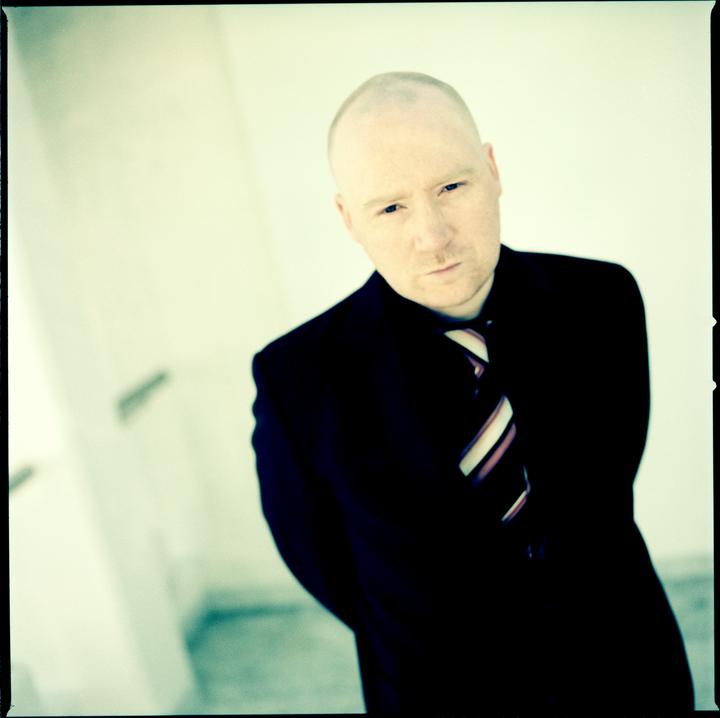
Kristoffer: Oh! We should certainly discuss the religious component of the whole thing again, though – between a renegade Protestant and a failed altar boy. But first, the music: you have already mentioned the loop as a formative motif and stylistic device. "Virðulegu Forsetar" actually reminds me of William Basinski's "Disintegration Loops," whose first of four parts had been released the year before.
But unlike Basinski's corroding tapes, Jóhannsson's composition is not about the finality of decay, but, like the individual pieces on "Englabörn," is circular in both compositional and conceptual terms. The striking brass motif slows down, is being immersed in and drowned by, well, noise, but rises up again and at the end is back where it had started: the same speed, the same volume. Nietzsche's theory of eternal recurrence and Möbius loops are said to have been among the themes that inspired Jóhannsson at the time, along with Thomas Pynchon's "The Crying of Lot 49," post horns, cybernetics and birds, although he decidedly did not want them to be understood as a theme of the music. But it is precisely this that reflects the input back: the album is a loop, the very first note already announces the dying of the sound as well as its inevitable return. This may very well be, and you have also hinted at that, a compositional sleight of hand, and of course it borders on a very solemn, perhaps even religious pathos. It smells of incense, an Easter-like scent lingers through the nave. But it does neither seem cheap nor kitschy. Why not? You said it: it's all feinted. For example, the melancholy never sets in because the music doesn’t go missing – its temporary absence is only being suggested.
Thaddi: You're nailing me to the cross here, to stay in Catholic parlance. What it's really about for me: I'm convinced that we are all susceptible to the kind of mood that Jóhannsson creates here. Because this mood is as emotional as it is abstract. That's why it's not necessarily pressed and immortalised into this form we are dealing with here. It's more of an idea, a thought that will shake us all to the core at some point. And that's exactly what happens to me with this record. I kneel down in awe. It has nothing to do with my childhood, but rather with my musical search for the ultimate. I take it in without judgement. I don't know the Basinski record you mentioned, nor have I read Pynchon's novel. I've always had problems with Pynchon, to be honest. This album however takes me away. I don't know exactly where to, but it does. The big, all-encompassing motif, the reduction, the destruction, the gentle reconstruction – and all that with just a few chords. I'm going to go out on my little, dark, quiet lane: this album is perhaps the best Jóhann Jóhannsson has ever made.
Kristoffer: That's a claim that I ... might second. I don't know. I think in my world, "Fordlandia" and "The Miners' Hymns" are in great competition with this record. However, the latter is not an album in the strict sense and in fact I have listened to "Virðulegu Forsetar" much more often in my life than to "Fordlandia," no matter how beautiful that LP is. Talking about vinyl: I consciously mentioned at the beginning that I first got my hands on the album as a vinyl record. Because what you say about concentration is a bit reflected in my, let's call it manual reception process. I like to get up, turn the record over, put the needle back in the groove and immediately find myself in the next chapter of this narrative, if we want to call it that. The album doesn't just do something to me emotionally, it asks me to participate in a way, or at least to have an experience with it. To engage with it both affectively and physically.
It's about transformations, about the aleatory nature of life. That's what makes this sublime album so extremely accessible to me.
It is also fitting that Jóhannsson himself has resolutely rejected the term "ambient." He said: "For me, it’s much more about chaos and tension rather than harmony. I go through many different emotions listening to the piece, veering from intense joy to acute sadness. The central point is perhaps how a very simple thing can change by going through a very simple process – something about change and transformation and the inevitability of chaos." And that sums it up excellently. It's about transformations, about the aleatory nature of life. That's what makes this sublime album so extremely accessible to me. A certain pomp is also hinted at, or in your words feinted, but actually Jóhannsson and his comrades-in-arms approach the very big themes here with very small individual means. A loop. A humming bass track, perhaps the most powerful in his discography. Even the glockenspiel, which was so present on "Englabörn," is extremely restrained. This leaves space and time to dive into this sound and to follow its stirrings and turmoil. To feel the tension he himself speaks of.
Which all brings me back to the question: how do we actually classify this music? We don't have to, of course. But the more I dig into his early work in particular, the more I wonder where this music suddenly came from, after he had previously played mostly in, well, at least pop-informed bands. The Apparat Organ Quartet was influenced by post-minimal music in an implicit way, but "Virðulegu Forsetar" seems to float in a music historical vacuum. That is also an argument for the album. However, I find it strange that this music came apparently out of nowhere. Can you connect this to anything else?
Thaddi: Actually no. But that's also a question I just don't ask myself anymore. I'm no longer interested in filling in certain gaps in his biography or his musical work. He is dead, I listen to his music as it has been handed down to me. Your points are all valid and interesting – for me, the emotions remain the determining factor. Because no matter what Jóhann Jóhannsson once said: what does "Virðulegu Forsetar" (still) do to me today? My conclusion is clear: I still feel this feeling of awe. And I still find myself sweeping through my kitchen, imitating the grand gestures of conductors. Taking in its power. A motif. One loop. 385 variations. No loss of meaning.
Kristoffer: I feel exactly the same way. However, we are also working on a project dedicated to a certain continuity, working his discography chronologically. Therefore, we must look both backwards and forwards from time to time. From "Virðulegu Forsetar" it goes on towards "Fordlandia," "The Miners' Hymns," some of his film soundtracks are also already hinted at here. But I feel like there's no real before. Don't get me wrong, that's not a shortcoming for me. And on the other hand, I don't want to romanticise it and indulge in genius worship. I want to analyse it. But for that, one building block seems to be missing. Perhaps you're right though: maybe it's best to let this composition stand on its own, to reconnect with it from time to time and feel something new every time.
Thaddi: Of course, with an artist like Jóhannsson, it's also, if not mainly – I hope we'll find out in this series – about small, minimal changes in his basic "palette," as they say. This term makes me nauseous, but then again I'm not a composer. Maybe it's just fitting, too. "Virðulegu Forsetar“ remains the best loop in the world for me. That's quite something.
